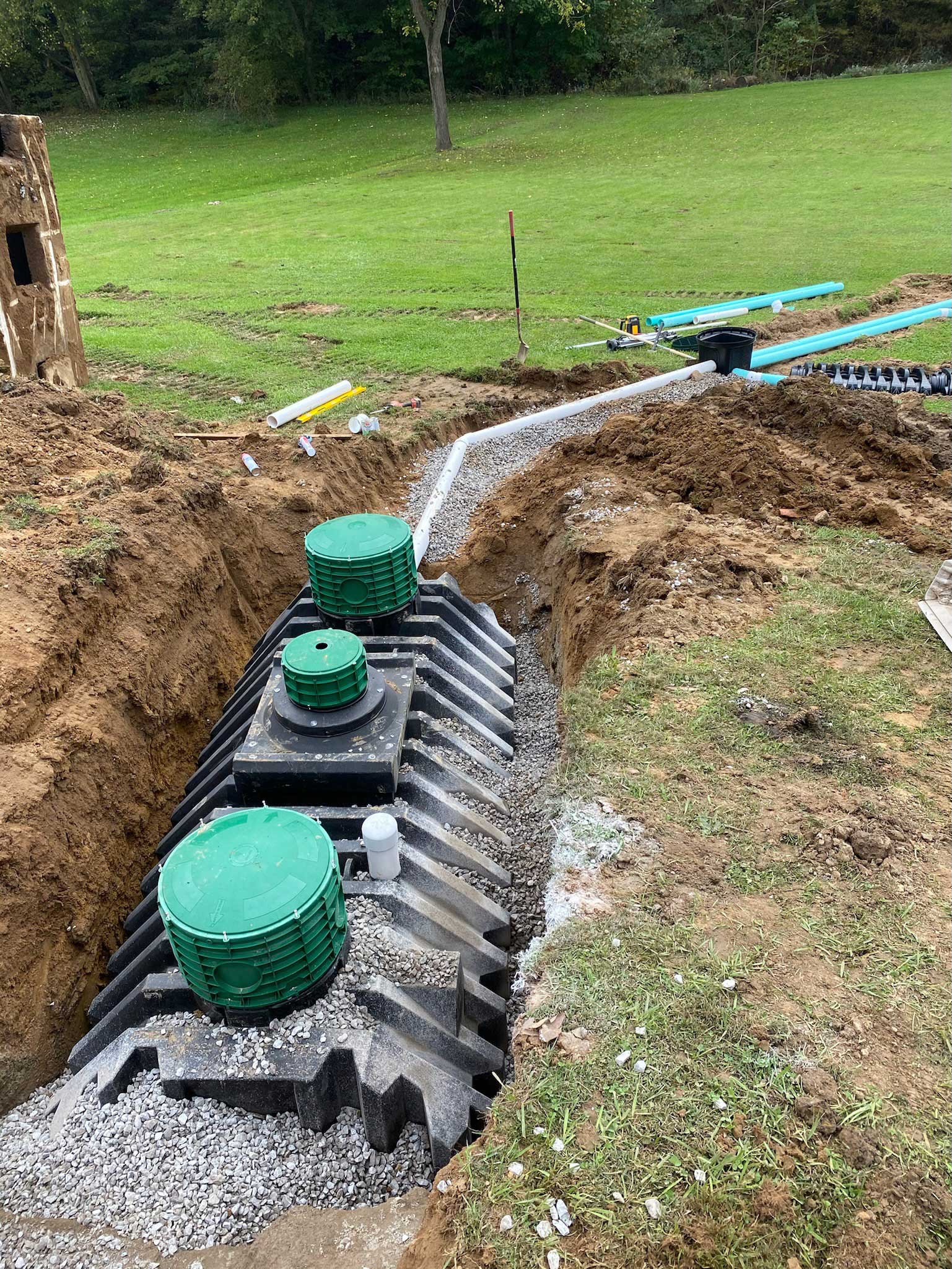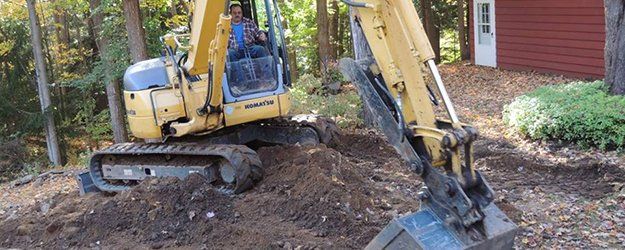Professional Septic Ohio - Relied On Septic System Specialists in Ohio
Professional Septic Ohio - Relied On Septic System Specialists in Ohio
Blog Article
Revealing the Art of Excavation: Pro Tips for Safe and Productive Digging
In the realm of excavation, the mastery of safe and effective digging is an art type that needs knowledge, adherence, and precision to well established methods. As dirt is turned and earth is moved, the complexities of excavation expose themselves, demanding an eager understanding of tools, dirt structure, safety procedures, and ecological factors to consider. The know-how needed to browse these aspects effectively can indicate the distinction in between an effective excavation job and a possible calamity. By deciphering the layers of this detailed process, a globe of strategies and insights waits for those seeking to raise their excavation abilities to new heights.
Importance of Proper Devices
To guarantee the safety and efficiency of any type of excavation project, making use of the appropriate equipment is extremely important. Excavation tasks vary in range and intricacy, ranging from little residential landscaping tasks to large-scale building and construction tasks.
These versatile machines come in various sizes to fit different task requirements. Small excavators are optimal for smaller sized tasks, while larger excavators deal with much more extensive jobs successfully.
Apart from excavators, various other important equipment consists of dump trenchers, vehicles, and excavators. Discard vehicles are essential for removing and transferring excavated products, while trenchers are made use of for digging slim and deep trenches. Bulldozers excel in tasks that call for pressing huge amounts of dirt or debris. By purchasing the appropriate equipment, excavation tasks can be finished securely, on schedule, and with precision.
Recognizing Soil Structure
A comprehensive understanding of dirt structure is basic for executing excavation projects with precision and safety. Recognizing the different kinds of dirt is crucial as it directly influences excavation approaches, tools option, and overall job performance.
Silt fragments are smaller sized than sand but bigger than clay, using moderate water drainage and communication. Organic issue, such as decaying plant material, influences soil fertility and stability.
Prior to starting excavation, conducting soil tests to identify its composition and qualities is necessary. This info aids in selecting the proper equipment, executing precaution, and developing excavation methods customized to the details soil conditions - excavating ohio. By comprehending dirt make-up, excavation specialists can improve project outcomes while making sure safety and adherence to best methods
Safety And Security Actions and Protocols
Understanding dirt make-up is the keystone upon which security actions and protocols for excavation projects are constructed, guaranteeing the well-being of workers and the success of the undertaking. When it concerns security throughout excavation, there are several vital measures that must be implemented to mitigate dangers and prevent accidents.
First and primary, prior to any kind of excavating begins, an extensive inspection of the site need to be carried out to determine any possible hazards such as underground utilities, unpredictable soil conditions, or neighboring frameworks that can posture a threat. It is critical to have an experienced individual manage the excavation procedure to ensure that all security methods are complied with purely.
Furthermore, all workers included in the excavation should be effectively learnt secure excavating methods and the appropriate operation of devices. Individual protective tools (PPE) such as hard hats, high exposure clothes, handwear covers, and safety boots should be put on in all times to lessen the risk of injuries. septic ohio. Normal security meetings and tool kit talks ought to likewise be carried out to keep all workers informed regarding possible hazards and enhance secure work methods. By adhering to these safety steps and protocols, excavation jobs can be finished efficiently and without occurrence.
Efficient Excavation Preparation
When starting an excavation job, precise preparation is vital to ensure efficiency, safety and security, and effective outcomes. Efficient excavation planning entails a basics number of crucial steps that are crucial for the smooth implementation of the job. The primary step is to perform a thorough site assessment to recognize any prospective dangers, such as below ground energies or unpredictable dirt conditions. This info is crucial for developing an in-depth excavation plan that includes precaution and take the chance of mitigation techniques.
When the website assessment is full, the following action is to produce a clear timeline and routine for the excavation tasks. This includes determining the sequence of tasks, equipment needs, and manpower allotment. Correct scheduling helps avoid hold-ups and makes certain that the project remains on track.

Furthermore, interaction amongst all team participants is critical throughout the planning stage. Clear instructions, regular updates, and efficient coordination are vital for an effective excavation job. By investing effort and time in meticulous preparation, excavation groups can considerably boost performance, lessen risks, and attain successful end results.

Handling Ecological Factors To Consider
With raising focus on ecological sustainability in building practices, taking care of ecological considerations has come to be an important aspect of excavation tasks. Excavation activities have the potential to affect the surrounding setting via dirt erosion, debris overflow, environment disruption, and contamination of water sources. To mitigate these risks, it is necessary to apply ideal techniques that focus on environmental management.

In addition, appropriate waste monitoring is important to protect against soil and water contamination. Applying procedures for the disposal of unsafe materials, recycling of waste products, and decreasing the use of hazardous chemicals can substantially minimize the environmental influence of excavation jobs. By incorporating these practices right into excavation preparation and implementation, construction firms can make sure that their tasks are not just safe and effective yet additionally eco responsible.
Verdict
Finally, mastering Visit Your URL the art of excavation requires an extensive understanding of correct equipment, soil structure, precaution, and efficient planning. By following these standards and taking into consideration ecological variables, excavations can be carried out safely and successfully. It is vital to prioritize safety and security and efficiency in every digging task to ensure successful results.
As soil is turned and planet is relocated, the details of excavation disclose themselves, requiring a keen understanding of equipment, dirt make-up, safety protocols, and environmental considerations.To guarantee the safety and effectiveness of any excavation project, using the ideal devices is extremely important.A detailed understanding of dirt composition is basic for executing excavation jobs with accuracy and safety. Understanding the different kinds of soil is vital as it directly affects excavation techniques, tools selection, and total project effectiveness. By recognizing dirt structure, excavation professionals official website can improve project outcomes while ensuring security and adherence to finest techniques.
Report this page